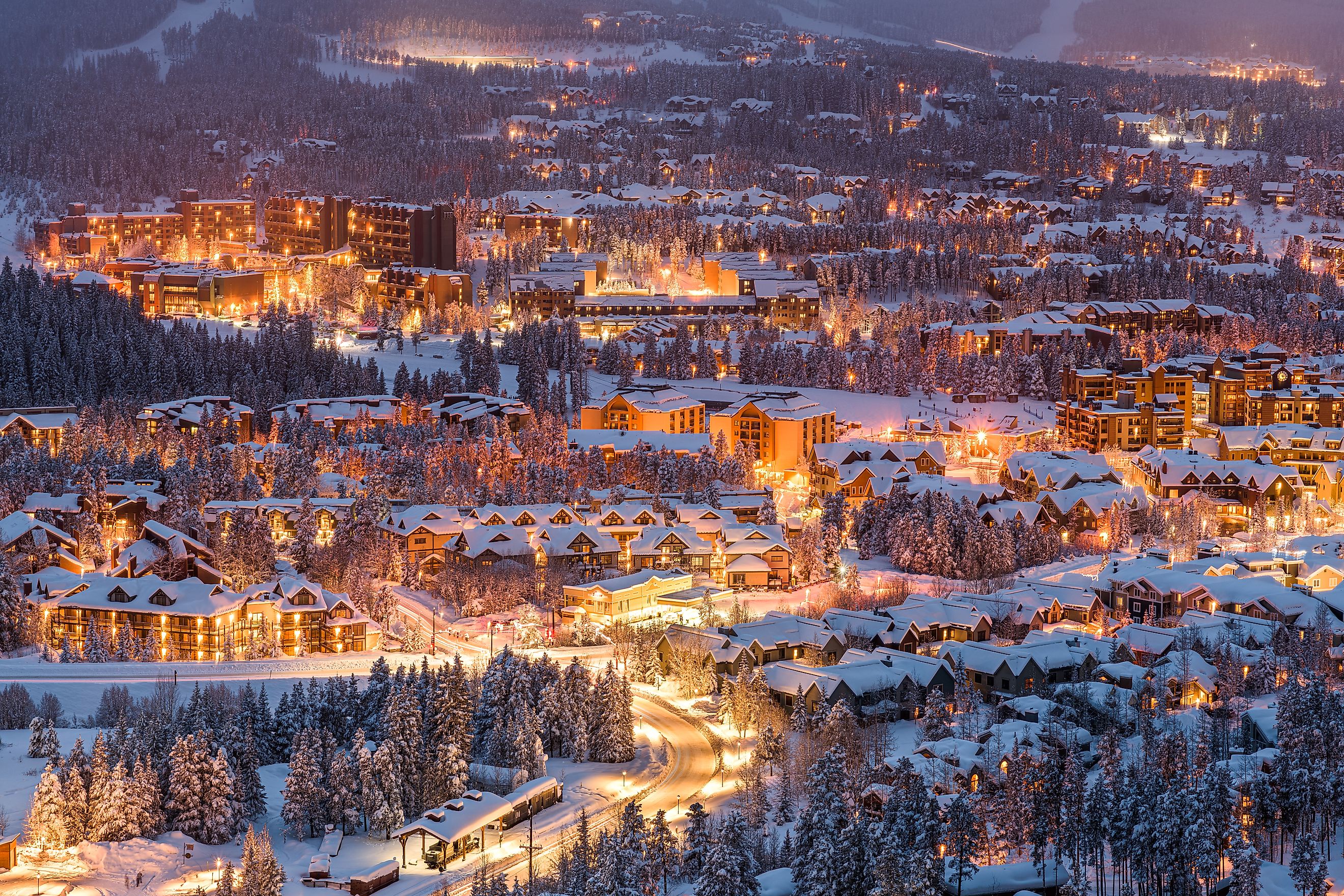
9 Towns in Colorado that Transport You to the Past
The Centennial State of Colorado is steeped in fascinating history. Throughout the state, you will find mining towns steeped in rough-and-tumble charm. Heading southwest toward the Four Corners, you can discover a wealth of Native American indigenous landmarks and heritage. And if you know where to go, you can reach some of North America’s oldest rocks and one of its deepest canyons.
Whether you prefer wandering through ghost towns or hiking through vast national parks, Colorado has all sorts of historic sites and landmarks worth exploring. To get a better sense of what you can see and do, check out these nine towns in Colorado that transport you to the past.
Breckenridge
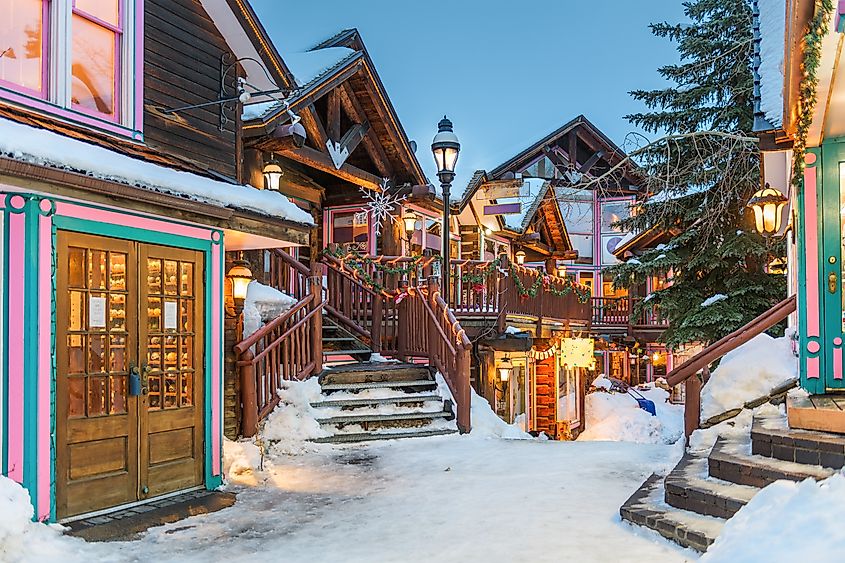
To experience a fairly encapsulated version of Colorado’s evolution from a hardscrabble Western mining state to a top-tier tourist destination, you can begin in Breckenridge. Located around 80 miles west of Denver, prospectors founded this town in the heat of the 1859 Pikes Peak Gold Rush to serve miners digging for gold by the Blue River. Visitors can begin to dig into Breckenridge’s pre-mining history and early mining days at the Breckenridge Welcome Center Museum. Then, dig deeper at sites like the Washington Mine and the Country Boy Mine, which offer a first-hand glimpse into mining tales.
While Breckenridge is steeped in history, the town has since evolved into a premier destination for outdoor recreation, particularly for skiing and snowboarding enthusiasts. Breckenridge Ski Resort, established in 1961, boasts 2,908 acres of skiable terrain, offering something for every skill level. Adventurers can experience the thrill of North America’s highest lift, the Imperial SuperChair, which rises to an astounding 12,840 feet above sea level, or enjoy one of the resort's five expansive peaks featuring trails with up to 3,398 feet of vertical drop. After a day on the slopes or exploring the surrounding beauty, unwind in luxury at accommodations like the Hotel Alpenrock Breckenridge or Gravity Haus, offering easy access to the town’s mountain activities.
Mancos
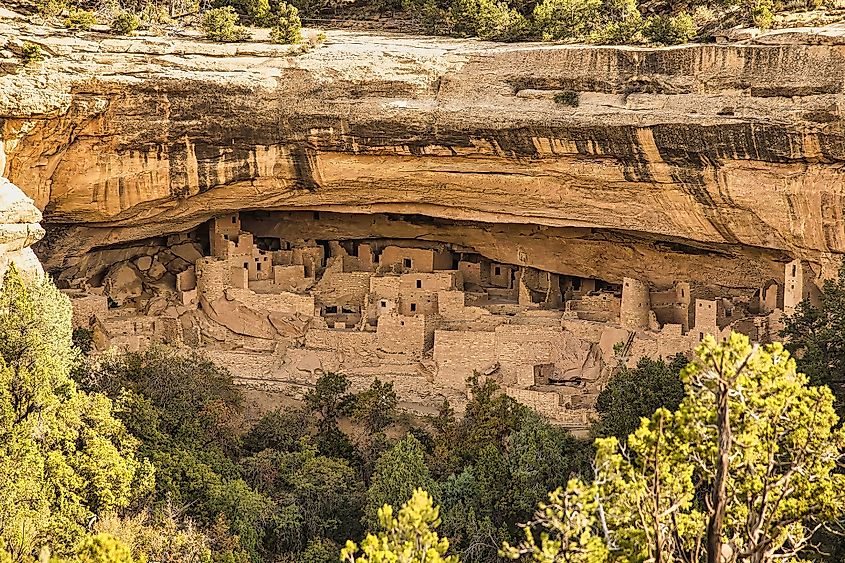
Mancos is a town home to one of North America’s most impressive concentrations of ancient indigenous dwellings. More specifically, Mancos is where you will find Mesa Verde National Park, a UNESCO World Heritage Site with over 4,000 archaeological sites dating as far back as 550 CE. Come for the impressive cliff dwellings built by local Ancestral Puebloan communities, and stay to see how their artistry and craftsmanship influenced the Hopi indigenous culture that persists in the Four Corners region today. After exploring the cliff dwellings, tourists can check out the artifacts and exhibits at the Mesa Verde Museum for more learning.
For more adventures around Mancos, head to Mancos State Park. This 500-acre park is excellent for fishing, camping, paddling, and kayaking at Jackson Gulch Reservoir. For some much-earned refreshment after your excursions, go to Mancos Brewing Company to get their original craft beers. And once you’re ready to get some rest, you can check in at the quirky yet comfy Mesa Verde Motel.
Alamosa
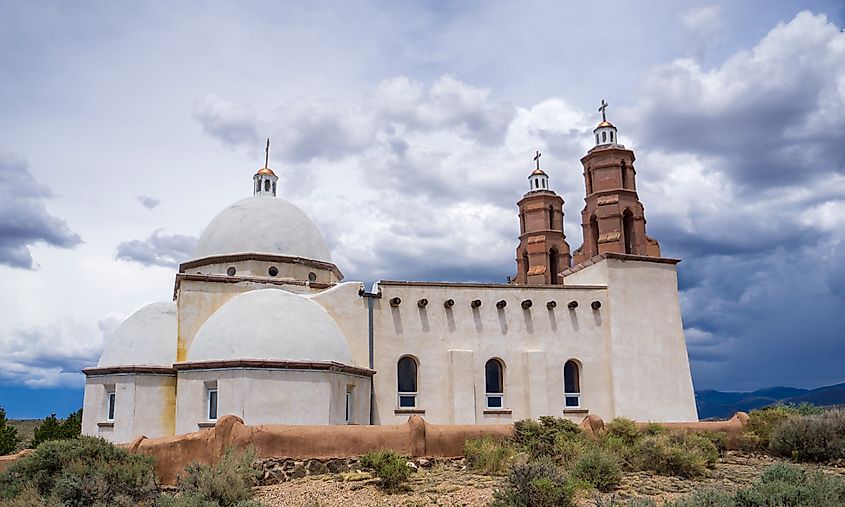
About 165 miles southwest of Colorado Springs, you can discover North America’s tallest sand dunes at the edge of the Rocky Mountains. Of course, Alamosa sits by Great Sand Dunes National Park and Preserve, which has about 30 square miles of massive dunes and fields ideal for hiking, sandboarding, and ATV riding. To reach even greater heights, you can hit the nearby trail leading up to Blanca Peak, the Sangre de Cristos’ tallest summit at 14,351 feet above sea level. For some more natural refreshment, check out the stunning scenery at Zapata Falls.
Native American indigenous peoples have lived in the region for at least 11,000 years, and the discovery of gold and silver in 1870 led to a rush of white settlers into the region. Visitors can learn all about Alamosa’s backstory at the San Luis Valley History Museum and the Luther Bean Museum at ASU. For a more hands-on experience, one can ride the Cumbres & Toltec Scenic Railroad, which has operated in the region since 1880. After making some of your own amazing stories around Alamosa, kick back and relax at the Great Sand Dunes Lodge near the national park.
Glenwood Springs
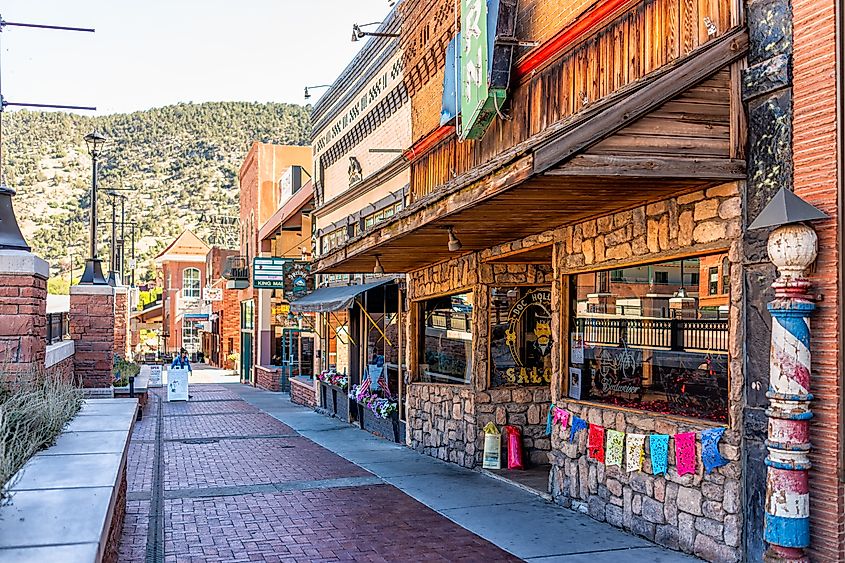
With a name like Glenwood Springs, it’s easy to assume this is quite the scenic and laid-back Colorado town. Since the 1880s, travelers have been flocking to Glenwood Springs to enjoy the region’s soothing hot springs and feel better. At the Frontier Museum, you can tour a 1905 Victorian house and see how Glenwood Springs developed into a popular wellness destination. Afterward, hike to the historic Linwood Cemetery to find the final resting place of Old West legends like Doc Holliday.
Those who fancy a dip into the legendary local springs have many options. Yampah Spa offers spa services in one of North America’s only natural vapor caves, which have been used for treatments since the 19th century. Similarly, at Iron Mountain Hot Springs, you can soak in up to 32 hot springs-fed pools. Furthermore, at Glenwood Hot Springs Lodge, you can enjoy the original wellness retreat that helped put Glenwood Springs on the map.
Telluride
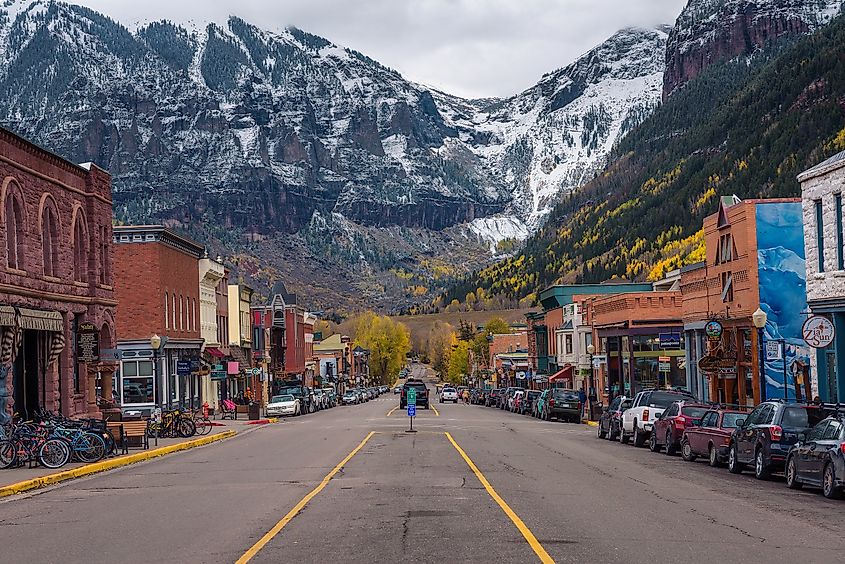
Nestled in a box canyon surrounded by majestic peaks, there’s something undeniably special about Telluride from the moment you arrive. Its charming downtown has been designated as a National Historic Landmark District since 1961, offering glimpses of the past through its preserved clapboard storefronts and Victorian-era homes. For a deep dive into local history, visit the Smithsonian-affiliated Telluride Historical Museum, housed in a hospital building from 1896. To explore the region’s mining past, take a short drive to Alta Ghost Town and wander among the remnants of a once-thriving silver boomtown from the 1870s.
By the late 20th century, Telluride experienced a resurgence with the opening of the Telluride Ski Resort, transforming it into a premier destination for winter sports enthusiasts. The resort offers world-class slopes for all skill levels, boasting 2,000 acres of skiable terrain and a jaw-dropping 4,425 feet of vertical drop. After an exhilarating day on the mountain or exploring the town’s historic sites, unwind in style at the New Sheridan Hotel, a landmark that has welcomed guests since 1895.
Morrison
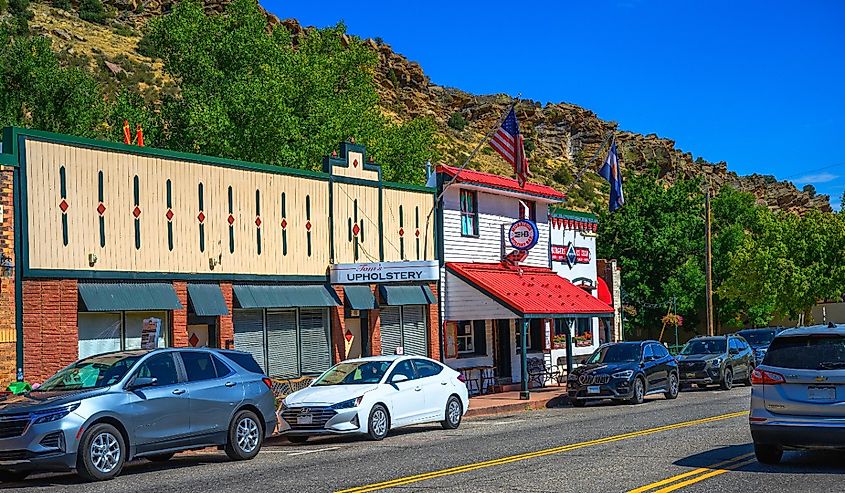
The village of Morrison may only be about 20 miles southwest of downtown Denver, yet it can feel a world away with its historic charm and otherworldly scenery. You can start digging into the region’s storied past at Morrison Natural History Museum, which is chock full of dinosaur fossils and other prehistoric artifacts from the dinosaur era. The museum even offers hands-on sessions with the Triceratops Gulch Project’s Dinosaur Digs. For more prehistoric fun and games, head to Dinosaur Ridge for guided walking tours with geologists to the area’s fossil beds and dinosaur tracks.
Offering a different take on local history, hike the Castle Trail Loop in Mount Falcon Park to reach the ruins of a grand estate built by the industrialist and conservationist John Brisben Walker in 1909. Afterward, head to the world-famous Red Rocks Park & Amphitheatre to catch a concert, book a yoga session, and/or hike the trails to catch the area’s iconic sandstone formations. And though it’s not hard to drive back into Denver, if you prefer staying close to all the action out here, stay at the Cliff House Lodge for a truly eclectic stay along with your own jetted hot tub.
Montrose
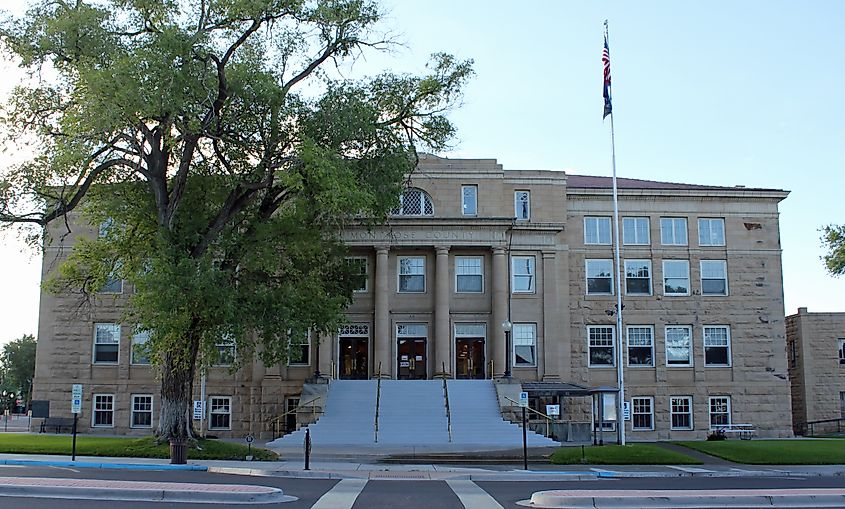
Montrose places you near some of the Centennial State’s most timelessly stunning natural scenery. At Black Canyon of the Gunnison National Park, you can hike the trails and catch views of the area’s famed “black” rocks (that appear black due to shadows), including Precambrian rock that’s nearly two billion years old. For even more adventures in the wilderness, go to the nearby Gunnison Gorge National Conservation Area to raft and fish in some of the region’s finest Gold Medal waters.
Visitors can head back to town to learn more about local history at the Montrose County Historical Museum (open during the summer season). This site portrays the past through various exhibits, from early pioneer life to horse-drawn machinery. Nearby, the Museum of the Mountain West beckons with its Old West frontier experience. For a grand historic stay in town, check into The Rathbone Hotel in the rustic K.P. Building from 1909. It has recently been renovated with keyless technology and retro-chic custom design.
Central City
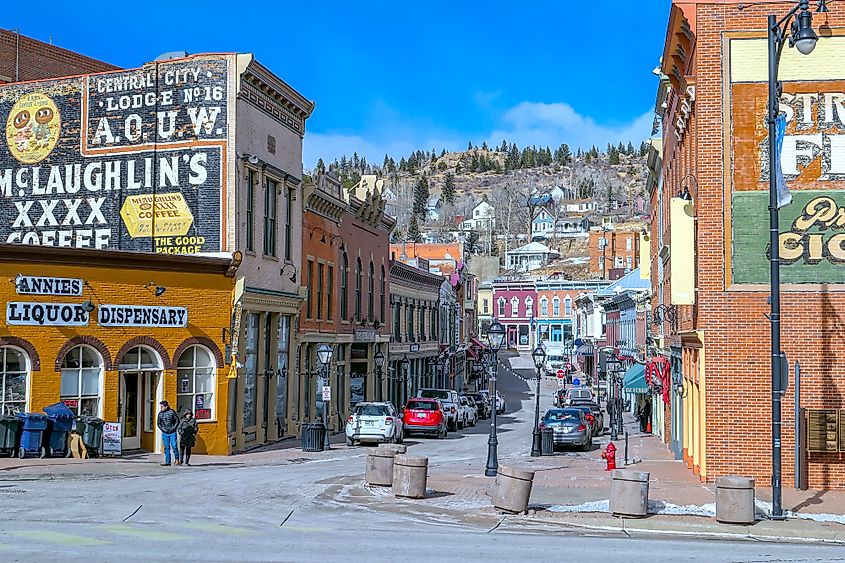
Central City once reigned supreme as the "Richest Square Mile on Earth." This moniker came from the discovery of gold during the Pike’s Peak Gold Rush in 1859, which brought hordes of prospectors to the area. Today, enthusiasts can dive into Central City’s rich past at the Gilpin History Museum, housed in the city’s original schoolhouse from 1869. Another rustic spot nearby is the Greek Revival-style Thomas House, which dates back to 1867. And suppose you want to catch a show staged by one of the United States’ oldest professional opera companies. In that case, you can do so at Central City Opera and the 1878 vintage opera house they operate in.
Though you won’t find many active mining operations around Central City, you will find a different kind of “gold rush” in the form of casinos, such as Dostal Alley and The Famous Bonanza. And for a full casino with slots and electronic table games alongside a full-service hotel, you can stay and play at Century Casino Central City.
Durango
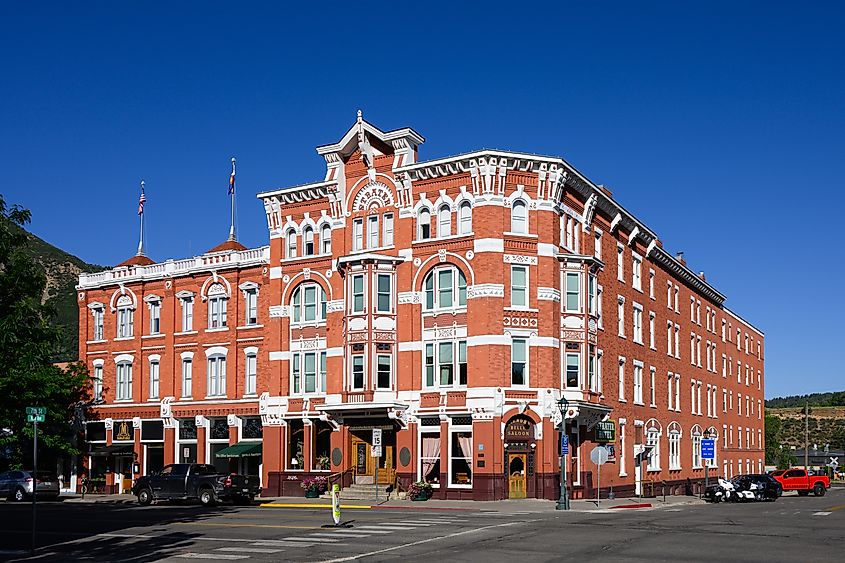
As a historic railroad town, Durango is a place where you can continually explore new frontiers. Located around 210 miles northwest of Albuquerque (New Mexico), white settlers began pouring into Durango with the opening of the Denver & Rio Grande Railroad in 1880. Tourists can still ride their way around the area at the Durango & Silverton Narrow Gauge Railroad. Furthermore, the railroad’s museum is a blast to the past with vintage coaches, locomotives, and even an Indian motorcycle. Beyond railroad history, the Center of Southwest Studies at Fort Lewis College offers a fuller understanding of the region as it is now.
Durango abounds in natural beauty, and you can experience much of it by taking one of the trailheads in town that leads into Overend Mountain Park. If you’re up for more adventures, catch the Colorado Trail at Junction Creek for hiking, biking, and snowshoeing with up to 1,457 feet of elevation gain. After the hike, enjoy a wonderfully historic stay at The Rochester Hotel, a rustic hotel first opened in 1892.
The Centennial State Has a Wondrous Past and a Wonderful Present
If you’re looking for towns in Colorado that transport you to the past, you have many options throughout the state, and the nine towns featured here are among the very best. For a great dig into the Centennial State’s mining history, Central City and Breckenridge have plenty of hidden gems awaiting your discovery. When you’re looking to go deep into local indigenous culture, Mancos places you near the iconic Mesa Verde cliff dwellings. And when you can use a relaxing soak, dip into the inviting waters of Glenwood Springs. No matter how you want to throw back, these nine Colorado towns transport you to all kinds of timeless treasures.











